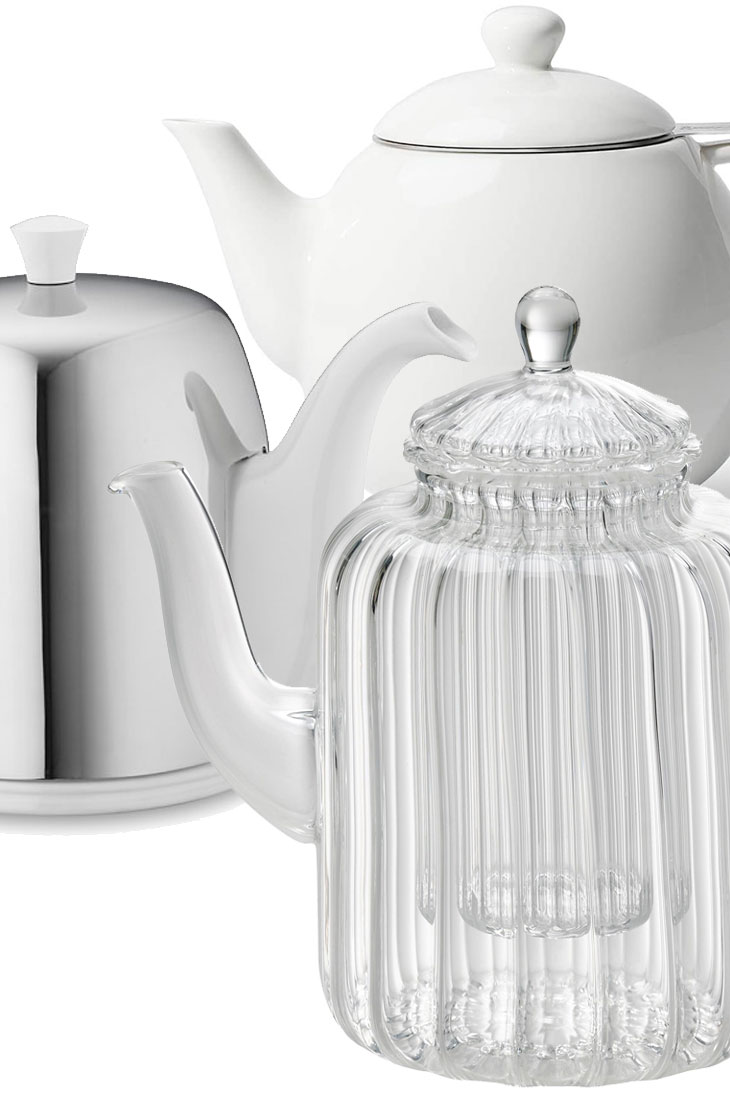
5 out of 5 stars. Its more delicate thin and usually translucent.

Ceramic tile is more porous and therefore has a higher water absorption rate.
Ceramic vs porcelain teapot. Earthenware or crockery versions of ceramic pots are considerably thicker and therefore stronger than delicate glass or porcelain but they too can break from mishandling or being subjected to extremes of cold or heat so again - no popping into the fridge or setting on a direct flame except with a complementary tea warmer stand. Ceramic teapot teapots appear firstly in Asia and the Middle East. They are always tiny and have low seepage but the ceramic material has natural heat-retention properties.
So they are able to brew tea quickly and achieve good heat retention. But this kind of teapot accompanies with one issuewhether or not can they brew more than one kind of tea. Ceramic vs porcelain teapot.
Porcelain is basically a type of ceramic. Its more delicate thin and usually translucent. Porcelain is white and often comes with remarkable patterns.
Its great for tea parties and sophisticated tea times. Porcelain may crack if you use a boiling water so reheat if first and avoid boiling water. Tea vs Coffee Organic Fair Trade and Kosher White Tea Green Tea Oolong Tea Black Tea Pu-erh Rooibos Honeybush Mate Measuring Quality More Tea Stories Tea on the Go Advanced Health Benefits Part 2 Tasting Tea Talking Tea Common Tea Questions Common Health Questions Choosing Teapots.
Glass Porcelain or Ceramic. Though Jingdezhen porcelain is exceedingly thin high firing temperatures make the edges resistant to chipping while thicker clays fired at low temperatures usually chip more easily. Many connoisseurs of Chinese tea choose the style of their pot based on the tea they plan to brew since regional ceramic styles developed alongside regional tea styles.
Ceramic teapots are ideal for everyday use. These teapots can be used for all kinds of tea including white black green and oolong. Ceramic teapots come in various designs and styles that can be appealing to any tea drinker.
These teapots are slow to warm but hold the heat well without releasing into the tea to quickly. Teapots Some of the most common types of teapots are ceramics. This can include everything from porcelain to stoneware.
While the actual material the teapot is made of isnt that relevant what is important is what type of glaze is used. Most teapots use materials that are not water resistant. Resistance to water is perhaps the biggest factor in the ceramic tile vs.
Ceramic tile is more porous and therefore has a higher water absorption rate. It should not be used in outside applications. Ceramic tile is not as tough as porcelain.
Find the perfect affordable tea time gift in our Ceramic and Porcelain Teapots for One section of our online teapot shop. Choose from a stackable tea pot or a single serving teapot theres several to select from. These unique and often whimsical tea pots are sure to bring a smile to anyones face as they sip their favorite cup of afternoon.
Youll also notice that our beautiful floral teapots are glazed porcelain or bone china vs an unglazed ceramic. This assures that the teapot can be thoroughly cleaned so that the flavor of the tea does not soak into the teapot. What is Porcelain.
Porcelain is a ceramic material resulting from heating materials at high temperatures. Its a collective term for ceramic products that is white and translucent. Porcelain is frequently used to make pottery vases and tea ware.
Porcelain tea sets tea pots and tea cups have been a popular gifts in the higher ranks of imperial China. Decorative Victorian Blue Hydrangea Stackable Porcelain TeapotCup Set. Ornamental White Blue Ceramic Floral Tea PotCup.
5 out of 5 stars. All three are great options for a teapot with pros and cons. Ceramic is sturdy and good for retaining heat but can be heavy.
Porcelain is light and delicate but can be too dainty. Glass is perfect for herbal tea but doesnt do well with retaining heat. An infuser is a must.
Its lighter in weight than regular clay chinaporcelain and translucent with a glass-like surface. Metal teapots have been around a bit longer starting with cast iron teapots that came into use in Japan in the 1600s. Silver silver-plate and pewter the poor mans silver teapots were first used in England and Scandinavia in the 1700s to brighten up teatime with their shiny surfaces.
At a glance you may think a ceramic pot is simply a terracotta pot with a good paint job. However ceramic pots are typically glazed with a coat of lacquer that prevents the soil from drying out at the same speed as it would in an unglazed clay or terracotta planter. 16LCeramic Electric Kettle Porcelain Kettle Porcelain Foam teapot Daily Kungfu teapot Ceramic Electric Kettle Quick Brew Tea Coffee Soup Office HomeB Color.
Egret Teapot Mini Home Accent Fine Porcelain by XoticBrands. Show your love for the famous Japanese fish with this Koi Koi in Lotus Pond Creamer from XoticBrands. This creamer is entirely cast in fine porcelain that adds more durability and stability to this creamer.
On the other hand gaiwans are generally made from porcelain or another type of ceramic. Porcelain is very dense and wont affect the flavor of your teas at all. Therefore you dont have to dedicate one to a certain tea type.
Both teapots and gaiwans can be made from different material. However in this comparison we narrow the scope to porcelain gaiwans and yixing teapots.